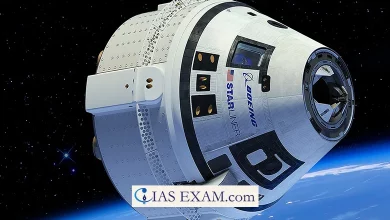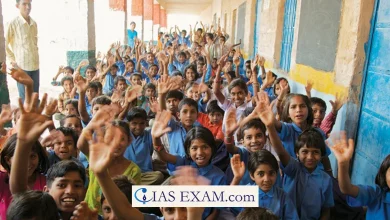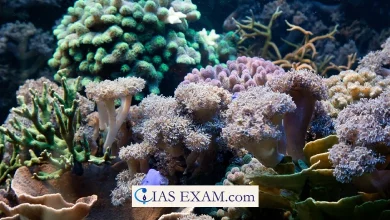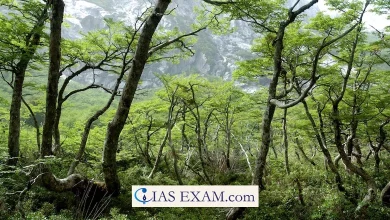Daily Current Affairs for UPSC
Homeland Security Dialogue in India
Syllabus- International Relations [GS Paper-2]
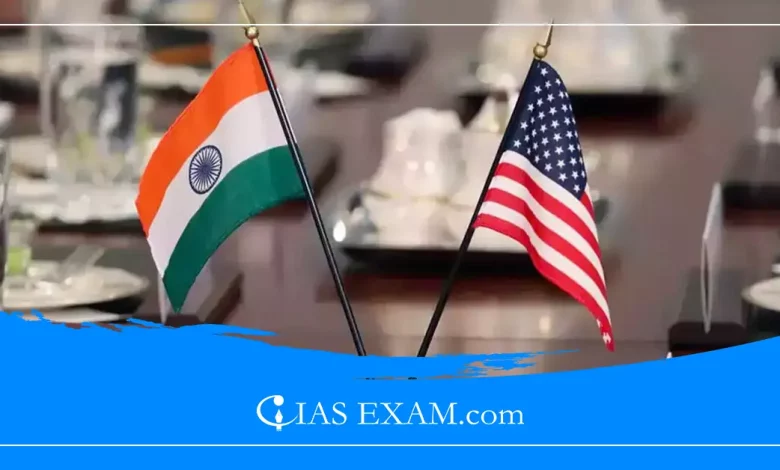
Context
Recently, India and the US had a discussion on bilateral cooperation on various issues during Homeland Security Dialogue at New Delhi.
The Homeland Security Dialogue
- It is a high-level dialogue among India (led by the Union Home Secretary) and the United States (led with the aid of Acting Deputy Secretary, U.S. Department of Homeland Security) that focuses on numerous security-related issues.
- Both nations discussed steps that may be taken to strengthen bilateral efforts to combat terrorism and violent extremism, drug trafficking (especially of the drug Fentanyl, that the U.S. Has been grappling with), organised crime, and ensuring transportation security.
- They reviewed ongoing cooperation in counter-terrorism and security domains, which has been a key pillar of the India-U.S. Strategic partnership.
- India’s counter call from the U.S. To cut down separatist agencies running in the U.S., together with the ones accountable for current assaults on Indian missions, did come up at some point of the talks.
- The talk concluded with the signing of a Memorandum of Cooperation on regulation enforcement schooling between the US Federal Law Enforcement Training Centre and India’s Sardar Vallabhbhai Patel National Police Academy.
About India and US Relations
- The US – India strategic partnership is founded on shared values inclusive of a commitment to democracy and upholding the guidelines-based international system.
- They have shared pastimes in promoting international protection, balance, and economic prosperity through change, investment, and connectivity.
- Bilateral Trade: It has risen with the aid of 72% between 2017-18 and 2022-23. The US accounted for 18% of the Gross FDI inflows into India for the duration of 2021-22, rating second after Singapore.
- The United States is India’s biggest trading partner and most important export market.
- Defence and Security: Both have established a strong defence commercial cooperation that appears at possibilities for co-improvement and co-production of vital navy skills for each country.
- Earlier this year, the US accredited a direction breaking production licence for the co-production of GE F414 engines in India.
- They signed a troika of ‘foundational pacts’ for deep military cooperation, starting with the Logistics trade Memorandum of Agreement (LEMOA) in 2016, observed by the Communications Compatibility and Security Agreement (COMCASA) after the primary 2+2 talk in 2018, and then the Basic trade and Cooperation Agreement (BECA) in 2020.
- Strategic Security and Technology Cooperation: In 2023, both took steps aimed toward establishing a trusted partnership between the two countries.
- The launch of the Critical and Emerging Technology (iCET) initiative marked a first-rate milestone within the U.S.-India partnership, which is more and more defined by strategic security and technology cooperation.
- Nuclear Cooperation: Civil Nuclear Deal was signed in 2005, beneath the agreement, India agreed to separate its civil and navy nuclear centers and area all its civil sources below International Atomic Energy Agency (IAEA) safeguards.
- In return, the U.S. agrees to work towards full civil nuclear cooperation with India.
- Space Cooperation: With India’s signing of the Artemis Accords, each country has established a common vision for the future of area exploration for the gain of all humankind.
- They prioritise furthering cooperation on human spaceflight, commercial collaboration, and area exploration, and cooperate through the bilateral Civil Space Joint Working Group.
- Addressing Regional Security Challenges: They increasingly discover themselves in agreement on strategic troubles, inclusive of countering China’s aggression, promoting an unfastened and open Indo-Pacific, and addressing nearby security challenges.
Challenges in India and US Relations
- Unequal Bargains and Rigid Approaches: Both countries have had to learn to talk to each other as equal partners, which has been a learning experience for both.
- Indians often become cautious of the U.S. ‘s tries to drive unequal deals, while U.S.ns locate the Indian method rigid and sanctimonious.
- Trade and Economic Issues: India has expressed concerns over numerous trade-related issues.
- These encompass the withdrawal of change possibilities given to India underneath the Generalised System of Preferences (GSP) software, removal of India from the U.S.’s list of ‘developing countries’, high import tariffs on steel and aluminium, and visa restrictions that particularly hamper the exports of services, especially the IT-BPO services.
- Infrastructure and Regulatory Systems: Realigning U.S. Supply chains to India presents challenges. Infrastructure, logistics, and regulatory structures in India are not as nicely developed as the ones in China.
- India also has a complex legal and bureaucratic system.
- India’s desire for its strategic autonomy: While its inclusion with the U.S. is getting more potent, deeper and more complete, India is likewise cognisant of the need to hold its strategic autonomy.
- Conflicting Positions: India’s muted criticism of the Russian invasion of Ukraine in 2022 expectedly caused some frustration in the West, elevating questions over India’s credibility as a security partner.
- Defence Relations with Russia: The United States has expressed a unique situation regarding new streams of palms like the S-400 air defence system, because they fuel Russian energy, diminish possibilities for interoperability of and strong communications between U.S. and Indian forces, and avoid sharing of present weapons technologies.
Way Forward and Conclusion
- India and the United States cooperate carefully in multilateral corporations such as the United Nations, G20, Association of Southeast Asian Nations (ASEAN)-related fora, International economic Fund, World Bank, and World Trade Organization.
- They share a not unusual vision to deploy smooth power at scale, as meditated in each countries’ formidable 2030 objectives for climate motion and clean strength.
- They also are exploring avenues to boost our mineral security cooperation to make sure we will strengthen our clean energy goals.
- The evolving relationship among India and the U.S. holds enormous significance in shaping the worldwide order of the 21st century.
- To completely release the capacity of this partnership, each government ought to be aware of reducing bilateral and multilateral bottlenecks and charting a course for a comprehensive and strategic global alliance.
Source: PIB
UPSC Mains Practice Question
Q.‘What introduces friction into the ties between India and the United States is that Washington is still unable to find for India a position in its global strategy, which would satisfy India’s National self-esteem and ambitions’. Explain with suitable examples. (2019)





.png)
